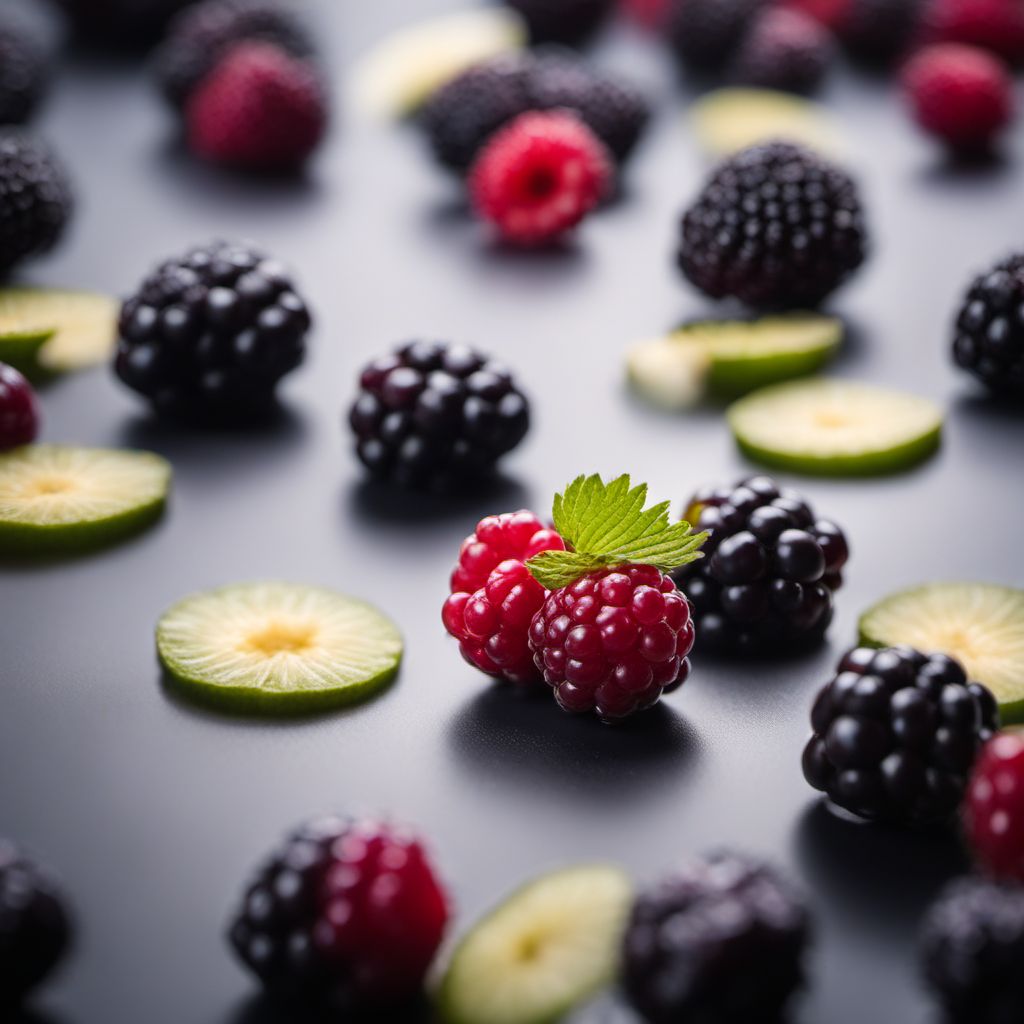
Ingredient
Blackberries and similar-
The Berry Bliss
Blackberries are known for their deep purple-black color, plump texture, and sweet-tart taste. They have a juicy and slightly seedy flesh, making them perfect for jams, pies, desserts, and even savory dishes like salads or sauces. Similar berries, such as raspberries and blueberries, share similar characteristics and culinary applications.
Origins and history
Blackberries are native to Europe, Asia, and North America, and have been enjoyed for centuries. They were highly valued by ancient Greeks and Romans for their medicinal properties and were even used to make ink. Today, blackberries are widely cultivated in many countries around the world.
Nutritional information
Blackberries and similar berries are low in calories and packed with essential nutrients like vitamin C, fiber, and antioxidants. They are also a good source of vitamins A and K.
Allergens
Blackberries and similar berries may cause allergic reactions in some individuals, particularly those with sensitivities to other berries or fruits. It is advisable to exercise caution if you have known allergies.
How to select
When selecting blackberries and similar berries, look for plump, firm fruits that are uniformly colored. Avoid berries that are overly soft, moldy, or have signs of bruising. The berries should have a vibrant color and a fresh, sweet aroma.
Storage recommendations
To prolong the freshness of blackberries and similar berries, store them in the refrigerator in a breathable container or a paper towel-lined tray. Avoid washing the berries until just before use to prevent premature spoilage.
How to produce
Blackberries and similar berries can be grown in home gardens or purchased from local farmers markets during the peak season. They require well-drained soil, ample sunlight, and regular watering to thrive.
Preparation tips
Blackberries and similar berries can be enjoyed fresh as a snack, added to breakfast cereals, yogurt, or smoothies, or used in a variety of desserts like pies, tarts, cobblers, or jams. They also pair well with savory dishes like salads, sauces, or marinades for meats or poultry.
Substitutions
Raspberries and blueberries can be used as suitable substitutes for blackberries in most recipes. They offer a similar sweet-tart flavor and can be used interchangeably in many dishes.
Culinary uses
Blackberries and similar berries are commonly used in pies, tarts, jams, jellies, desserts, smoothies, salads, sauces, and marinades. They are versatile fruits that add a burst of flavor and vibrant color to various culinary creations.
Availability
Blackberries and similar berries are widely available in regions with suitable climates for cultivation. They are commonly found in North America, Europe, and parts of Asia.
